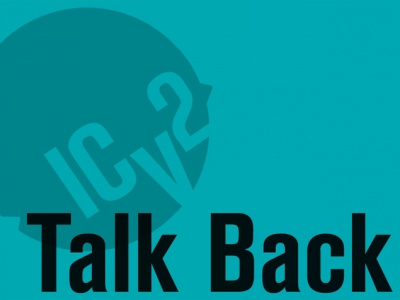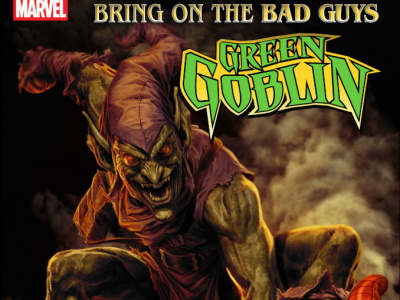John Riley of Grasshopper's Comics in Williston Park, New York, saw the comment from Reggie Griffin of PowerAnime on Steve Bennett's columns on comics content (see 'Reggie Griffin of PowerAnime on Bennett Columns'), and decided to give some nuts and bolts advice:
I have to agree with Reggie Griffin of PowerAnime. We retailers as a group tend to spend a bit too much time arguing over, complaining about, or discussing things which we have little control over. Like Reggie I think we really should be spending more time on business ideas that we can take from each other and utilize within our businesses. So I thought I'd start by contributing a nuts-and-bolts article on what we do here at Grasshopper's to get kids into comics, which seemed to be directly connected to this discussion of content and value.
The interesting thing to come out of these discussions is that we can all agree that we do not have the same comics, either in appearance or content, that we did when we were kids. And importantly, kids do not have the same accessibility (i.e., widespread newsstand distribution) to these comics either. In the 1970s, comics were in every drug and stationery store. And with virtually every comic being 'code approved and kid friendly,' it was fairly easy for a kid to become hooked on reading them on a regular basis. They were available everywhere and everything was appropriate.
But today's environment is much different, and as such requires a different approach. First of all, comics are now the realm of 'specialty stores,' requiring a special trip by mom or dad. And as we've discussed, there are few monthly comics, published on a consistent basis, which are all-ages appropriate. For today's kids comics have the qualities of 'a treat,' an indulgence that requires extra effort to acquire. For these reasons I agree with Jim Brocius that the actual entry age for comics now is in the teen years, when kids can not only relate to and purchase the more dramatic/intense material that makes up so much of our market, but also can get to the specialty shop by themselves.
But it's still important for young kids to develop a relationship with comics so that hopefully they can expand that relationship when they're older. To do this we decided to first change the environment by establishing a 'kids section' right at the front of the store. This is a cul-de-sac stocked entirely with all-ages comics, trade paperbacks and Cine-manga. In the center is a rug with a matchbox town on it and a spiral gumball machine. This set-up achieves a number of things. It demonstrates to parents immediately upon entering the store that we have a child-friendly environment and makes them feel comfortable. Immediately upon entering the store it sparks a young child's imagination and provides them with instantly recognizable characters (Cine-manga are great for this). Being next to the counter, it provides a place for young children to browse and wait for parents who have brought in older siblings for other merchandise, be it comics or games. In the past, these children either wandered aimlessly or restlessly bugged mom or dad. But now, they can explore the cul-de-sac to their hearts content and the parents are happy, as they know that they can't get lost. After all, it's not an accident that sections devoted entirely to young children in mass-market stores only have one way in or out. We parents don't like to lose our kids.
Now that the kids have a section that both they and their parents are happy with, we made sure to stock it with a good selection. Since we know that parents view comics for kids as more of an intermittent treat, our primary focus is to provide kids with a complete source of entertainment in one reading. To that end, Bone; Amelia Rules!; Star Wars Clone Wars Adventures; Lions, Tigers, & Bears; and Simpsons trade paperbacks fill this section, as well as an entire wall of digests from Marvel, DC and Tokyopop. We speak to each parent entering this section about their child's interests and their preferences. If we can, we steer them toward non-superhero trade paperbacks first. Moms are usually more comfortable with these (as they often view superhero fare as violent) and we know the kids will get a great complete story which leads to reading the trade multiple times. This in turn makes the parents happier with their purchase and more likely to return. For parents who are only looking to spend a dollar or two we stock a complete line of Marvel and DC 'adventures' books, Disney, Archie, and other monthlies which provide a complete age-appropriate story.
A key strategy for us is to provide each kid with an additional free comic book with each purchase. We stock up each Free Comic Book Day and distribute these throughout the year. We provide each kid with one free book and tell them that they can get another one next time they come in. The parents are usually very happy with this surprise (and so are the kids!) and the kids have a built-in reason to return. When we do have children who are about to leave the store without buying anything we ask the parents if they would like a free comic book before they leave (the parents appreciate us addressing them rather than the kids). We then come out from around the counter to personally show the kids the books that they can choose from. The kids always leave with a free comic and again are told they can have another one the next time they come by the store.
In today's environment we don't expect young children to follow comics on a monthly basis as our market isn't set up for it, but instead we've created a situation where children come into the store regularly to pick up the next volume of a story that they've read. You have no idea how many requests we've already received for Lions, Tigers & Bears 2! After all, if they can anticipate the next volume of Harry Potter, why can't we have them anticipate the next volume of Bone?
I'm happy to say that this section has been incredibly successful for us and we continue to tweak it and our policies to increase its effectiveness. By establishing a relationship with the comic book art form early we hope that we can create regular customers later on. Because, after all, in our industry we have the job of creating our own fans.
The opinions expressed in this Talk Back article are solely those of the writer, and do not necessarily reflect the views of the editorial staff of ICv2.com.







